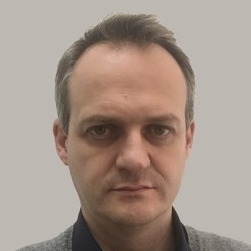Advances in Laser Technologies and Applications
A special issue of Materials (ISSN 1996-1944). This special issue belongs to the section "Manufacturing Processes and Systems".
Deadline for manuscript submissions: closed (31 August 2020) | Viewed by 46476
Special Issue Editor
Interests: laser processing; LIFT; laser shock processing; additive manufacturing; modeling
Special Issues, Collections and Topics in MDPI journals
Special Issue Information
Dear Colleagues,
We have the pleasure to invite you to submit a manuscript to the forthcoming Special Issue, “Advances in Laser Technologies and Applications”, for the journal Materials.
Since the invention of the laser, a broad variety of laser systems with different properties (wavelength, pulse duration, repetition rate, pulse energy, etc.) have been developed and have allowed the processing of almost any material (from metals to glass). Laser has been established as the key tool for many material processing applications and is many times the only real solution available. These great properties for material processing combined with its high flexibility and scalability, have allowed laser technology to be used in high throughput industrial applications and many current industrial production processes would not be possible without it.
This Special Issue covers the whole spectrum of laser materials processing, ranging from novel trends in well-established industrial processing techniques (like laser welding or laser micro processing) to fundamental research in novel applications (like laser tissue engineering or surface functionalization). This Special Issue will cover applications with new laser systems, new beam delivering systems (including high speed polygon scanners, ultra-fast varifocal lenses, spatial light modulator (SLM), etc.) and new methods for the monitoring and adaptive control of laser processes. In addition, fundamental research concerning the interaction between laser radiation and matter, including simulations and the modeling of these processes will also be topics of specific interest.
Dr. Miguel Morales
Guest Editor
Manuscript Submission Information
Manuscripts should be submitted online at www.mdpi.com by registering and logging in to this website. Once you are registered, click here to go to the submission form. Manuscripts can be submitted until the deadline. All submissions that pass pre-check are peer-reviewed. Accepted papers will be published continuously in the journal (as soon as accepted) and will be listed together on the special issue website. Research articles, review articles as well as short communications are invited. For planned papers, a title and short abstract (about 100 words) can be sent to the Editorial Office for announcement on this website.
Submitted manuscripts should not have been published previously, nor be under consideration for publication elsewhere (except conference proceedings papers). All manuscripts are thoroughly refereed through a single-blind peer-review process. A guide for authors and other relevant information for submission of manuscripts is available on the Instructions for Authors page. Materials is an international peer-reviewed open access semimonthly journal published by MDPI.
Please visit the Instructions for Authors page before submitting a manuscript. The Article Processing Charge (APC) for publication in this open access journal is 2600 CHF (Swiss Francs). Submitted papers should be well formatted and use good English. Authors may use MDPI's English editing service prior to publication or during author revisions.
Keywords
- Laser processing
- Modeling
- Microprocessing
- High throughput
- Process Monitoring
- Industrial manufacturing
Related Special Issue
- Advances in Laser Technologies and Applications (Volume II) in Materials (3 articles)






